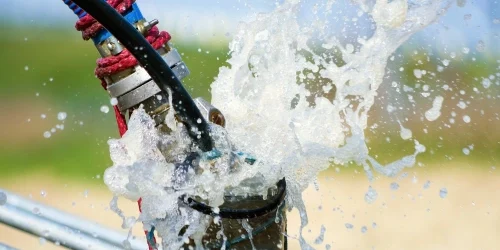
Like with most faucets repair, a broken hose bib (outdoor faucet) is one of the most neglected plumbing upkeep at home. After all, what is there to be stressed out on a seemingly trivial setback, right? However, only when it starts ruining your gardening or car washing plans will you truly understand how important it is to have a functional outdoor water source.
You may not realize it yet, but a hose bib does more than just provide you with a water flow outside your home. It is the lifeline to many of your day-to-day routines—watering your plants, hosing down your driveway, you name it!
Also, repairing a faulty hose bib is actually pretty straightforward, even without a plumber at your side! In less than an hour, with a little effort, you can restore your outdoor faucet to its former glory. Here’s how to do it.
1. Turn Off the Water Supply
Before you start any repair work, it’s crucial to turn off the water supply to the hose bib. Find the dedicated shut-off valve for the outdoor water line (usually located near the main water meter or inside your house) and turn it off completely. This will prevent water from flowing out while you’re working.
2. Remove the Broken Hose Bib
Once the water is turned off, it’s time to remove the broken hose bib. Use a wrench to loosen and unscrew the hose bib from the pipe. You may need to remove any hose or attachments from the bib before fully unscrewing it. Keep in mind that some older hose bibs may be rusted or stuck, so you might need to apply a bit of WD-40 or a similar lubricant to help loosen them.
3. Inspect the Pipe and Threads
After removing the old hose bib, take a moment to inspect the pipe and the threads. If the threads are damaged, you may need to replace the pipe section before you can install the new replacement. If the pipe looks fine, you can proceed with the next step.
4. Install the New Hose Bib
Simply screw the new hose bib onto the pipe, making sure it’s threaded properly. Tighten it with your wrench, but be careful not to over tighten it, as this could damage the pipe or the hose bib. If your new hose bib came with plumber’s tape, wrap it around the threads before screwing it in to ensure a watertight seal.
5. Check for Leaks
Once the new hose bib is installed, it’s time to turn the water supply back on. Open the valve slowly and check the hose bib for leaks. If you see water leaking around the connections, tighten the bib slightly with your wrench or check the plumber’s tape to make sure it’s sealed correctly. If the leak persists, you may need to reapply the tape or check the condition of the pipe threads again.
6. Test the Hose Bib
Finally, attach a hose to the new bib and turn on the water to make sure everything is functioning as it should. If the water flows freely and there are no visible signs of a leak, give yourself a tap as you’ve aced the task!
No Time For DIY Faucets Repair? Let Transou’s Plumbing & Septic Handle Your Plumbing Repairs Quickly
As you can see, hose bib repair is a piece of cake! With a single wrench, a little flex of muscles, and a few minutes of your day, you’re already back to “as new” hose bib condition. But we also understand if you simply can’t squeeze this task into your busy day. After all, DIY faucets repair isn’t a strict requirement but merely a recommendation— you can always leave it to the pro should you decide to.
At Transou’s Plumbing & Septic, we offer same-day plumbing repairs at flexible schedules. We can get to your home or business at your most convenient time and do the work quickly. For a job as simple as a hose bib repair, our plumber can finish the job in a matter of minutes while you go about your day!
Call us today and come home to your plumbing free from any trouble!
Contact Us
"*" indicates required fields

Did you know
Hot water is usually the second biggest energy expense in a home, often about 18% of a typical household’s electric bill. A poorly performing water heater can cost you several times more, in addition to constantly running out of heated water!






